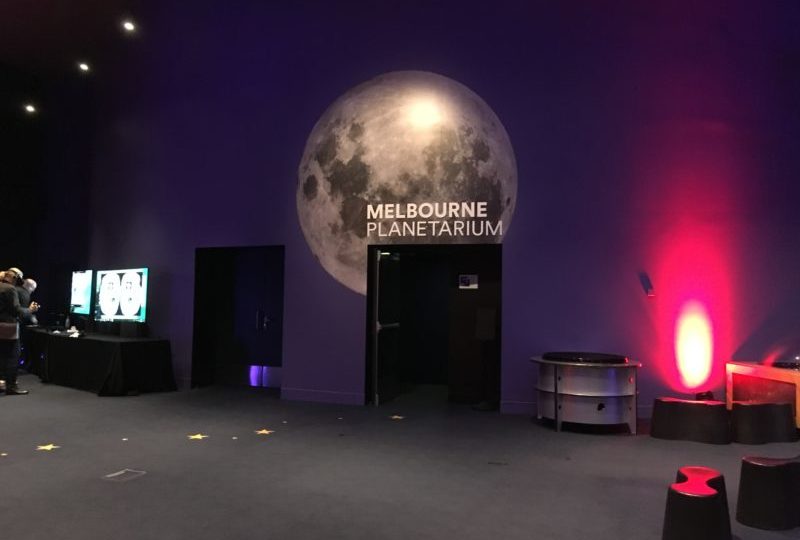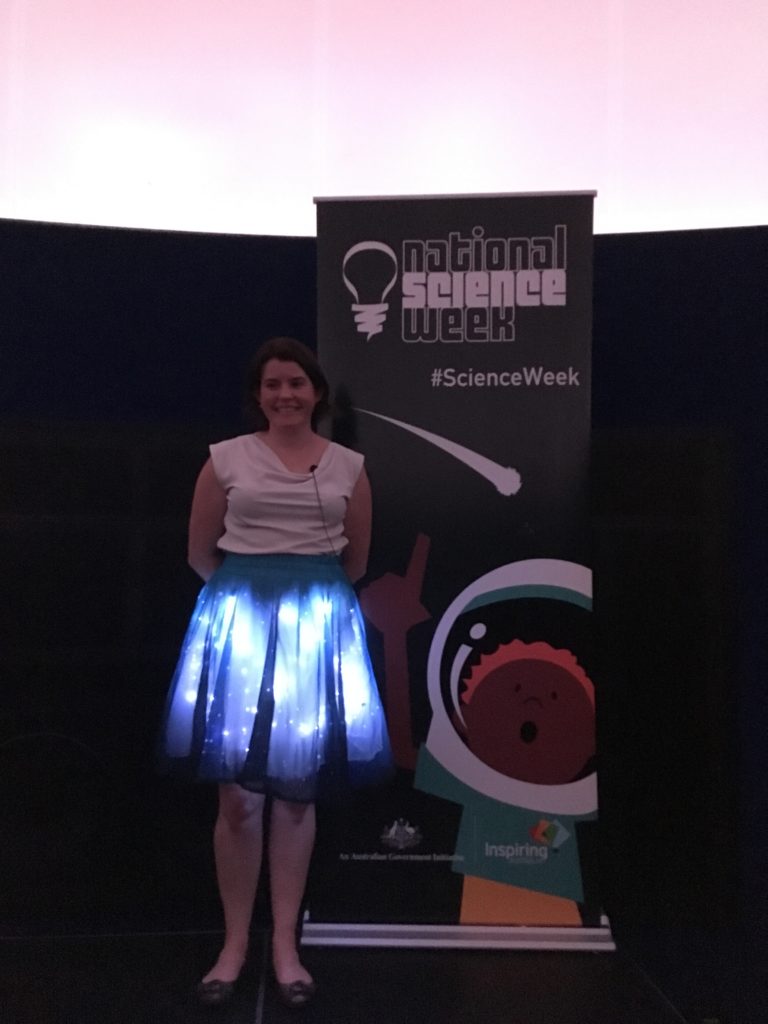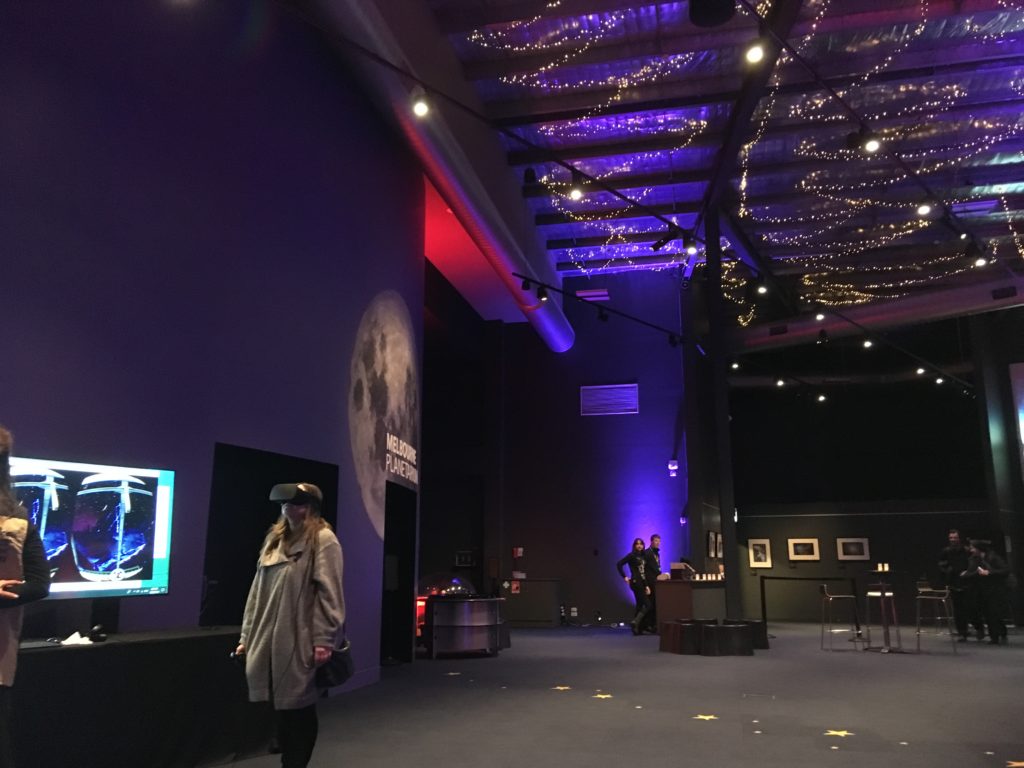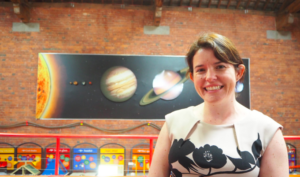Searching for New Worlds

People gathered at Scienceworks and the Planetarium on the eve of Monday 13th of August to search for distant planets. Venus, Jupiter, Saturn, and Mars were visible in the night sky through telescopes on the lawn, planets beyond our Solar System – exoplanets – could be explored using virtual reality technology, and the “Tomb Raider of exoplanet research”, Dr Jessie Christiansen, visited from NASA to share her planet hunting missions.

The planets around our star, the sun, are not the only ones out there. For years, people have wondered what exists beyond the one star, eight planets, and 710,000 minor planets (including dwarf planets, asteroids, etc.) in our Solar System. In 600 BC, exoplanets were discussed as we would discuss the idea of alternative universes today – once Aristotle landed on the idea of Earth being unique, that was that and all speculation was shut down. It wasn’t until the Renaissance that the idea was revisited by Giordano Bruno. He claimed that there are ‘countless suns and countless Earths rotating around their suns in exactly the same way’, and that we only see their suns rather than the planets themselves. His teachings led him to be executed for blasphemy and heresy, and his idea was rejected.
In the 20th century, ideas moved more rapidly. Isaac Newton also hypothesised that exoplanets exist, but had no means of testing his hypothesis. In 1952, Otto Struve claimed that we only know of our star and our Solar System but that there is more beyond. In 1992, Wolszczan and Frail found other stars at the end of their lives (pulsars), and three years later Mayor and Queloz observed a Jupiter-sized planet (now termed a “hot Jupiter”) that orbit around their stars. The idea that exoplanets exist had sunk in.
Dr Christiansen’s mission began with NASA’s Kepler Mission for which a one-metre telescope was sent into space in a vessel the size of a school bus to search for planets similar to Earth (rocky planets containing water) that orbit around a star like our sun. The Kepler telescope used the transit method to detect planets, which provides a planet’s size and mass (from which density can be derived), and its atmospheric properties. Kepler looked towards one direction and focused on 200,000 stars: if a planet orbited around the star, it would briefly block a patch of light coming from that star (looking like a black spot in front of the sun) as it transited across the view of the telescope lens. The Kepler Mission provided data to find thousands of planets – however it was the job of people back on Earth, such as Dr Christiansen, to sift through the data to detect planets. With this method, there are many false positives due to sunspots and other star anomalies that appear as transiting planets, and for this reason, it was difficult to detect Earth-like planets, but Hot Jupiters were abundant as they block the most light and are hence easier to detect. Furthermore, many of the planets found transit frequently, orbiting closer to their star with each revolution much more frequent than Earth’s 365 days. The Kepler telescope detected thousands of planets from a patch of the sky the size of your hand (as you look up at it), so imagine the area we searched were to be extended…
Knowing that giant planets that orbit close to their star are common, NASA produced the Transiting Exoplanet Survey Satellite (TESS) to specifically search for them. TESS is comprised of four 10 cm cameras – while this is greatly scaled down from Kepler, the cameras are more targeted rather than exploratory as Kepler was as NASA now knows what to look for. It was designed to scan the southern hemisphere skies for one year, followed by the northern hemisphere, shifting each month to cover the skies of the entire globe (looking outwards). At each patch it points towards, Dr Christiansen’s team will look for at least three transits across the star to consider a spot as a planet – therefore meaning that its orbit has to be within ten days.
TESS was launched on a SpaceX Falcon 9 rocket in April this year, and Dr Christiansen was at the launch to cheer it on. The first data was downloaded on the 8th of August, meaning that as she was delivering her presentation in the Planetarium, it was Monday morning in California, where her colleagues were beginning to examine the data. While TESS has a scheduled path for the next two years, the spacecraft could last a further 20-30 years, and it therefore may be possible for it to keep searching for smaller, Earth-like planets too (that may transit across their star less frequently).
How long can our search for planets last? NASA predicts TESS to find 16,000 planets, jumping from 70 known exoplanets, to 3,700 after Kepler, to 16,000 as the data starts to filter in from TESS this year. NASA is currently developing a 2.4m infrared telescope as part of the W-First Mission that will be launched in 2024 to search for cold planets, which is predicted to find 100,000 planets, so far it seems as though the numbers are only going up and up.
We can all be a part of the mission to hunt for exoplanets. Dr Christiansen invited us to participate in the search as citizen scientists. It’s easier to train people to find planets from the mission data than it is a computer, and therefore NASA has created citizen science projects for people to search themselves – and it so far has saved her years of work. You may even discover a planet yourself!

It is true to say that ‘exoplanets are booming’. Audience members were given the opportunity to travel and explore some of them themselves, using virtual reality portrayals of what the planets might be like based on mission data describing the environment of each planet (with a dash of artistic interpretation). While in the Planetarium, the audience marveled at the cosmos as they were taken on a journey to the edge of the known Universe. As we continue to learn more about the stars and planets beyond our Solar System, we learn more about our unique place in the Universe and how very small we are in the cosmos.

